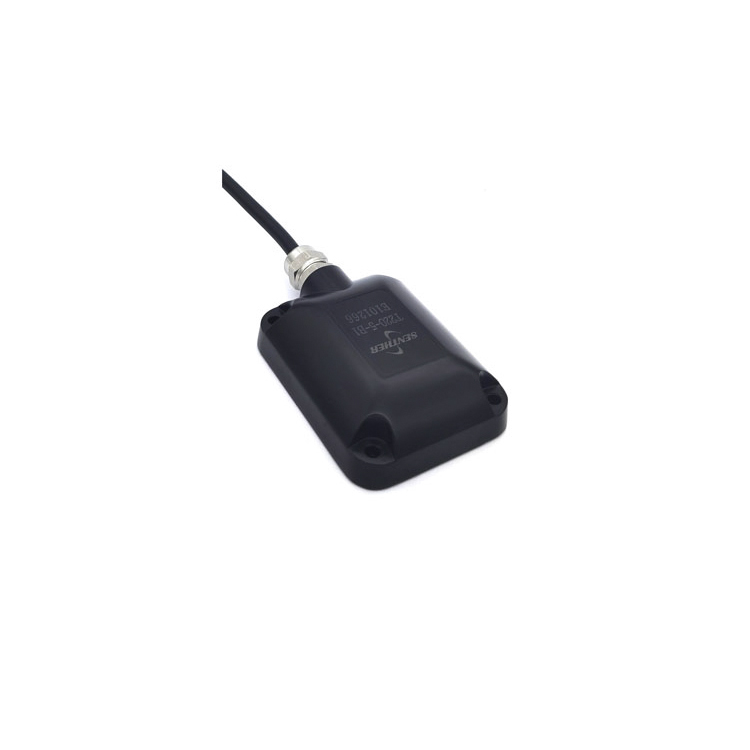Photovoltaic power generation equipment is generally equipped with a sun tracking system, also known as a sun chasing system. This photovoltaic array automatic tracking system can assist photovoltaic modules in accurately tracking solar energy by tracking the trajectory of the sun in real time, ensuring that the sunlight always shines vertically on the control equipment of the photovoltaic panel. This greatly increases the amount of solar radiation received by the photovoltaic array, thereby significantly improving the overall power generation of the photovoltaic system. The tilt sensor in the system is one of the key devices for optimizing solar energy reception rate.
The solar photovoltaic tracking system is divided into three types: horizontal single axis photovoltaic tracking system, oblique single axis photovoltaic tracking system, and biaxial photovoltaic tracking system. It can not only comprehensively improve the power generation of the power station, but also adapt to various complex terrains according to local conditions. These three tracking systems all adopt an active tracking control strategy, which calculates the orientation of the sun in the sky and controls the orientation of the photovoltaic array.
The solar photovoltaic power generation sun chasing system requires adjusting the orientation and tilt angle of the solar cells, so that the solar panels can make timely adjustments according to the movement of the sun, in order to always allow light to shine on the solar panels at a 0 degree incidence angle. Based on this, tilt sensors can be used to measure the angle information of solar panels, for comparison between the sun chasing system and the sun's orientation and height information, and to make commands for adjusting the solar panels.
The tilt angle sensor will be installed on the inclined surface of the solar panel. When the tilt angle of the solar panel changes, the tilt angle sensor can measure in real time. In this scenario, the basic principle of the tilt sensor can be abstractly simplified as a mass block and an accelerometer that can measure the fixed axial acceleration of the mass block. When tilting occurs, the internal mass block M generates a force F1 that varies with the tilt angle on the tilt sensor perpendicular to the inclined plane direction. Since the mass block is fixed in the axial direction perpendicular to the inclined plane, the force on the mass block in this direction will reach equilibrium.
A simple analysis shows that the relationship between the force F1 acting on the sensor and the gravity G of the mass block is: F1=G * cos θ. In this relationship, the gravity G and F1 can be calculated and measured respectively, thus obtaining the magnitude of the angle θ. Since the angle is the same size as the inclination angle and varies with the change of inclination angle, θ is the inclination angle.
Generally speaking, solar photovoltaic sun tracking systems calculate the direction and angle of the sun for each day of the year based on the local longitude and latitude, and store the information in computer software.In this way, the angle information of the solar panel measured by the tilt sensor can be compared with the angle information of the sun, and then the most appropriate angle adjustment for the solar panel can be determined.And to determine whether the appropriate angle has been reached, the inclination sensor measures the adjusted angle and sends it to the corresponding control end to determine whether to continue adjusting until the adjustment is completed.
Senther Technology develops high-precision dual axis tilt sensor T220

T220 is a dual axis tilt sensor that can achieve precise output over a wide temperature range. Internally, a high-speed microprocessor chip is used to linearly adjust the temperature compensation of the signal. This product adopts full process calibration and can be customized with digital or analog outputs. It is mainly aimed at applications in platform calibration, tower monitoring, flip protection, tilt alarm, and other fields. The fast response characteristics and high precision make this sensor the best choice for monitoring mobile platform devices.The built-in integrated high-order filter ensures signal quality and allows the sensor to be used in noisy environments (such as vibration environments). This series of products can adjust the sensor factory settings according to the application environment to provide optimal performance.Customization of measuring range, cables, and connectors can also be carried out according to on-site installation requirements. The sturdy aluminum alloy shell is resistant to oil, grease, and fuel erosion. Therefore, this sensor is very suitable for high-precision inclination measurement in harsh industrial environments.
Features: • High resolution • Wide measurement range • Wide power supply range • Optional single/dual axis output • Low power consumption • Harsh environmental applications
Application • Accurate Level • Geological Exploration • Automotive Testing • High rise Building Monitoring • Drilling Platforms


